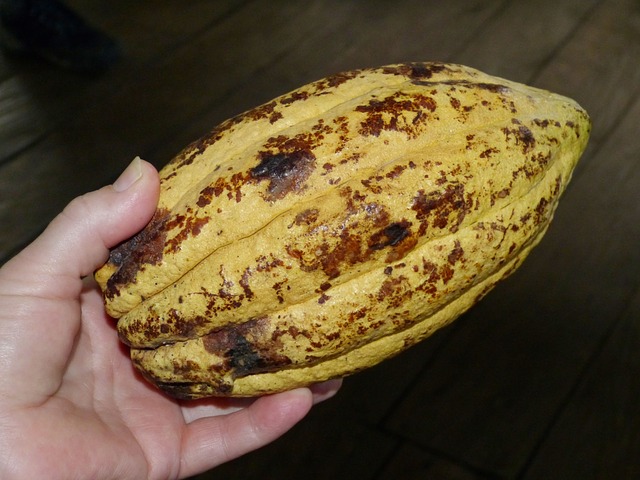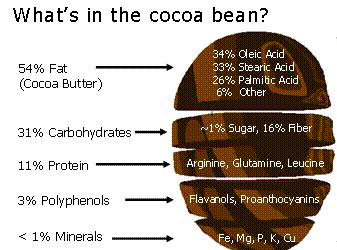- Home
- dark chocolate health benefits
Blog Categories
Recent Posts
Save Your Life: Eat Chocolate!
Posted by on
Chocolate is a universal food. The varieties of chocolate are limited only by our taste buds and imagination. It’s part of our culture, our meals, and for many farmers that harvest cacao pods twice a year, it’s a critical part of their daily lives. Found along the equator in West Africa, Southeast Asia, and South and Central America, this tree is full of mysteries and quirks that can only lend itself to its uniqueness as a super food.
For many years, however, chocolate has had a bad reputation as being bad for you; causing acne, diabetes, cavities and weight gain, among other illnesses. Turns out it’s the sugar, dairy, and other fillers that are added to raw dark chocolate that are bad for you. Dark chocolate is good for your heart, brain, and great for a first date 1, too.
International Chocolate Day is Sunday, September 13 th and World First Aid Day is the day before on September 12 th. That might not make much sense to you right now, but when you read about the health benefits of chocolate, you'll understand why we think it makes sense to celebrate them so close together.

So Where Does Chocolate Come From?
Seems like an odd question, but in a time when we’re wanting to connect with our food and know where it comes from, it makes sense. Chocolate shows up in great packaging with tantalizing colors and descriptions, but what do we really know about it?
No one really knows where the cacao tree came from; scientists agree the first tree came from Central or South America but don’t know the exact location – maybe the Amazon Basin of Brazil or the Orinoco Valley of Venezuela. Others think that the Olmecs, the first tribe to eat cacao 2, brought it with them from their original home. It’s all a bit of a mystery.
Cacao trees prefer a humid environment with lots of heat, rain, and humidity, which is why they’re found growing around the equator in West Africa, South and Central America, and Southeast Asia. Cacao trees are one of the smaller trees near the equator, and only grow 20 feet to 40 feet high. They live under the canopy of taller hardwood trees, some almost 200 feet high, which protect them from the harsh sun and wind elements of the tropics.
The Diversity of the Cacao Tree
Due to the growing conditions around the equator and tropics, it never gets “cold” like it does in the U.S.; there are dry and wet seasons and temperatures get a bit chilly, but many of the animals and plants mate or grow almost year round. An extended, almost year-round growing season allows for greater diversification of species and higher productivity.
Chocolate starts out as a cacao bean in a football-size pod hanging off the side of a tree called Theobroma cacao, derived from the Greek and meaning “food of the gods.” Unlike apples, pears or oranges, the pods don’t have an individual stem with leaves. Instead, they attach directly to the trunk and branches of the trees.
Before the pods, pink and white flowers emerge on the tree and need to be pollinated. Unlike other flowers, have they have no scent! Farmers sometimes pollinate them by hand or the flowers are pollinated by small gnats. One cacao tree can have flowers and pods at the same time, since the tree produces fruit year round. Each pod takes five to six months to ripen and has 50-60 seeds inside.
True to its growing environment, the cacao tree has evolved to include three varieties of pods 3 and beans:
- Criollo: Often called the Prince of Cacaos, this rare bean grows mainly in Central America and the Caribbean. A small percent of the world's cocoa comes from this soft, light-colored pod.
- Forastero: Most cocoa comes from this productive variety. Forastero trees have thicker pods and a strong chocolate taste, and grow in Brazil and Africa.
- Trinitario: This flavorful cross of Criollo and Forastero, originally from Trinidad, is easily cultivated.
Harvesting the Beans and Yes, Fermentation
Farmers harvest the pods from cacao trees twice a year using a machete or long knife, usually in the spring and fall. The trees are too fragile to climb, so harvesting needs to be done from the ground. The pods are sliced open and the seeds are taken out and placed into large boxes or raked into piles and covered with banana leaves.
The fermentation process, though it seems unusual for cacao beans, is what changes the bitter beans into the beginning of what we refer to as chocolate. As the seeds ferment, heating as high as 125 degrees Fahrenheit from the sun and chemical changes, the sugars are converted to lactic and acetic acids and enzymes break down the bitterness and change the beans’ flavors.
After two to eight days of fermenting, the raw beans change to a brown cacao color and are moved onto mats to dry out for 1 to 2 weeks until they are bagged and shipped out to chocolate factories throughout the world.
Once the beans get to the factories, they are roasted, shelled, and ground into a cocoa mass known as chocolate liquor. From there, the liquor can be broken down into cocoa solids and cocoa butter. White, dark, and milk chocolate have varying levels of flavor, sugar, and cacao. Further mixing leads to various chocolate products that are found in many grocery stores. After the beans get heated and roasted, they begin to lose their antioxidants.

Raw Cacao Beans
Also referred to as raw chocolate, this is where the most health benefits are found. This chocolate hasn’t been overly processed or mixed with other ingredients, and is made from combining cocoa butter and cocoa powder. Raw cacao can be purchased as whole beans (peeled or unpeeled), nibs, or powder.
In its organic, unprocessed form, raw chocolate contains:
- Magnesium, and other essential minerals including calcium, sulfur, zinc, iron, copper, potassium, and manganese
- Polyphenols called flavonoids, with antioxidant properties
- Vitamins: B1, B2, B3, B5, B9, E
- Essential heart-healthy fat (oleic acid a monounsaturated fat)
- Protein
- Fiber

The nutrients in raw chocolate have been linked to an amazing number of benefits. Still, like anything else, it’s best in moderation. Many of the benefits appear to come from the flavonoids and theobromine present in beans. These ingredients found in cacao can lower blood pressure and improve circulation by strengthening and dilating the blood vessels.
The antioxidants in cacao can lower LDL cholesterol, reduce cancer, and eliminate plaque buildup on artery walls, which keeps your heart healthy. The large amount of fiber, 16%, found in each bean will also improve digestion. In addition, the combination of minerals, proteins, fibers, beta-carotene, leucine, linoleic acid, lipase, lysine, and theobromine work together to stimulate the central nervous system and relax muscles. Serotonin also helps improve moods and reduce depression.The graphic on the right, provided thanks to BuiltLean.com 4, should give you a good idea of what's in chocolate, and why it's such a healthy treat.
As cacao farm owner and exporter Mark Meador stated in a recent interview, "People frequently ask me about the health benefits of fine cacao. I tell them to go online and dig a little. The evidence is abundant and compelling -- cardiovascular protection, increased cognitive function, mood enhancement, etc.
Medical data aside, I look to the 4,000-year Latin American tradition of consuming cacao, and the significance it has played in many cultures, and see evidence enough to make it part of my daily routine. It isn't named ‘Food of the Gods’ for nothing."
Organic Cocoa and Cocoa Powder
Organic cocoa and organic cocoa powder, recognized as interchangeable terms, are made by pressing most of the cocoa butter out of the cocoa bean and grinding the rest into a powder. Unlike conventional chocolate, organic chocolate is created using cocoa beans that haven’t been treated with synthetic fertilizers 5, herbicides or pesticides. All other ingredients included in the product -- sugar, milk, nuts, fruit, spices, etc. -- should be organic as well. Check the labels closely — the organic percentage ought to be anywhere from 70% to 98%.
The product should also have the green and white logo USDA Certified Organic on the packaging. GMOs, preservatives, and artificial colors are also forbidden; if any of these are listed with the ingredients, it’s not organic chocolate. Ideally, all forms of organic chocolate are minimally processed 6 and are made in facilities separate from conventional chocolate.
A great example of an organic chocolate treat is the organic coconut fudge spread Wise Choice Market carries – and it carries the health benefits of both chocolate and coconut. Healthy, delicious, and only slightly guilty!
Organic cacao may not be that different from wild harvested cacao, as Mark reminded me when I interviewed him. “I'm not wedded to the idea that organic cacao is superior to wild harvest fine cacao found throughout Latin America. In most cases wild is organic, just without paying the certifiers.” If you get to know who is growing your cacao and how, you’ll fare better than if you just stick with the labeling data.
Dark Chocolate
Like other chocolates, dark chocolate goes by several names and is also known as semi-sweet chocolate. Dark chocolate is chocolate liquor, the centers of cocoa beans ground to a liquid, with extra cocoa butter, sugar, an emulsifier, and vanilla or other flavorings. It may contain milk fat to soften the texture, but usually doesn’t taste milky.
I’ve been eating dark chocolate with high percentages of cocoa for a while, mainly because one of my girlfriends said it was better for me then other chocolate I’d been eating. Dark chocolate is satisfying and takes away the cravings I used to have, especially in winter. And I sleep better with some organic dark chocolate. Turns out, that’s just the beginning of the health benefits that dark chocolate delivers.
Dark chocolate has a higher percentage of cacao 7 then other chocolates do. The higher percentage of cacao makes dark chocolate healthier because it contains a higher percentage of flavonoids, vitamins and minerals that are found in raw chocolate. A higher percentage of cacao has less sugar, too. A 72% cacao dark chocolate bar has significantly less sugar than a 60% cacao dark chocolate bar. And as we all know, the less processed sugar we eat, the better.
Other major health benefits include:
- Reduced plaque buildup in your arteries 8 – Chocolate increases flexibility in your arteries 9 while also preventing white blood cells from sticking 10 to the walls of blood vessels. Also known as atherosclerosis, plaque buildup can cause heart attacks and strokes.
- Lower blood pressure – It dilates your blood vessels which takes the pressure off your heart and lowers your blood pressure 1.
- Increased antioxidant intake – Out of all the whole foods that contain antioxidants, raw chocolate is the highest in the world. It’s ten times higher in antioxidants then red wine 1, green tea, and blueberries.
As it turns out, International Chocolate Day and World First Aid Day do belong together. Eating moderate amounts of organic chocolate for dessert or as part of your daily meals, can reduce plaque buildup, and lower blood pressure. It can also help prevent heart attacks and strokes.
A Harvard study on the Kuna Indian tribe off the coast of Panama found that by drinking 5 cups of bitter sweet chocolate a day, the tribe had lower rates of all major diseases and lived longer than other tribes that lived nearby. Their lifestyles and diet were similar, but the Kuna had access to cacao trees, an advantage the other tribes didn’t have.
Have you had your chocolate today?
Image credits: Pixabay
References:
1. http://www.secrets-of-longevity-in-humans.com/raw-cacao-benefits.html
2. http://knowledgenuts.com/2013/10/22/the-difference-between-the-aztec-maya-inca-and-olmec/
3. http://www.thestoryofchocolate.com/Where/content.cfm?ItemNumber=3426&navItemNumber=3367
4. http://www.builtlean.com/2012/04/12/raw-chocolate/
5. http://danareva.hubpages.com/hub/Organic-Chocolate-VS-Regular-Chocolate
6. http://www.thestoryofchocolate.com/Savor/content.cfm?ItemNumber=3454&navItemNumber=3376
7. https://blog.udemy.com/different-types-of-chocolate/
8. http://cocoarunners.com/explore/chocolate-health/
9. http://www.sciencedaily.com/releases/2014/02/140227092149.htm
10. http://www.medicalnewstoday.com/articles/247837.php
Information provided in this communication is not designed to and does not provide medical advice, professional diagnosis, opinion, treatment or services to you or to any other individual. This is general information for educational purposes only. The information provided is not a substitute for medical or professional care, and you should not use the information in place of a visit, call consultation or the advice of your physician or other healthcare provider. Wise Choice Marketing Inc is not liable or responsible for any advice, course of treatment, diagnosis or any other information, services or product you obtain through Wise Choice Marketing Inc.


 Loading... Please wait...
Loading... Please wait...













